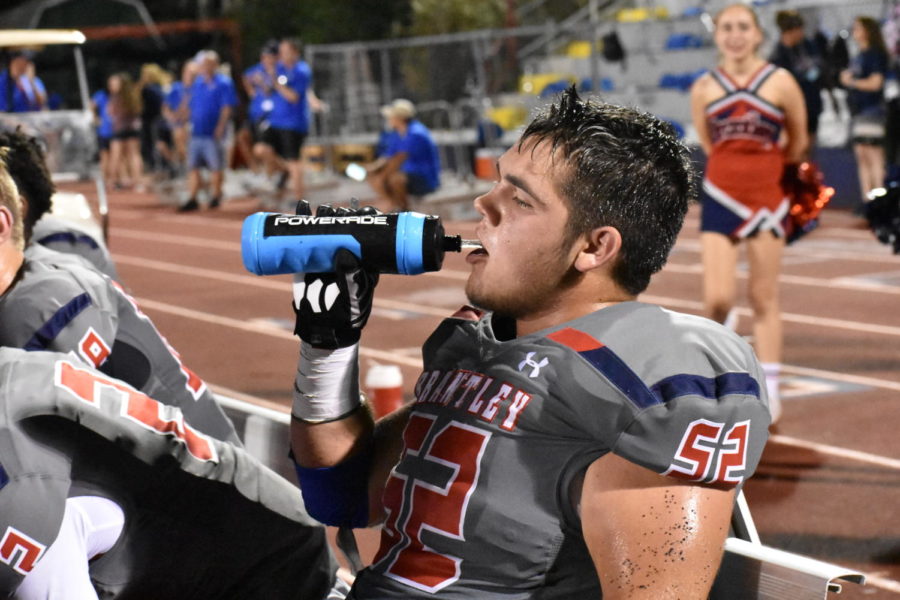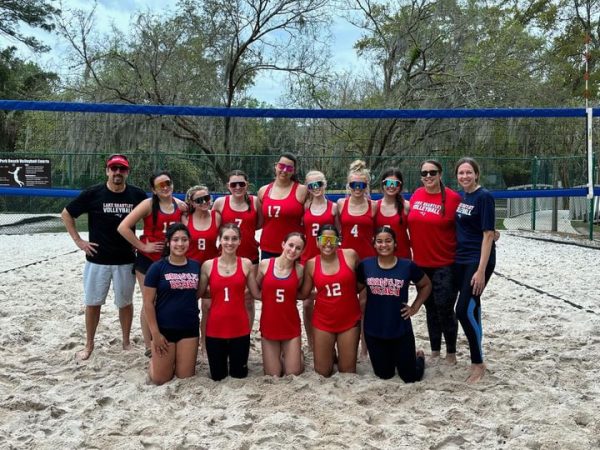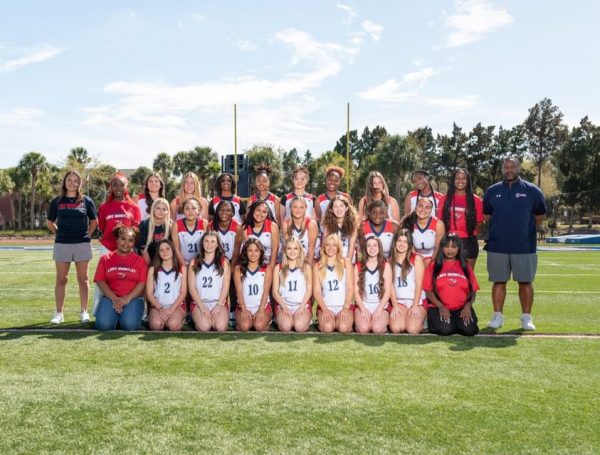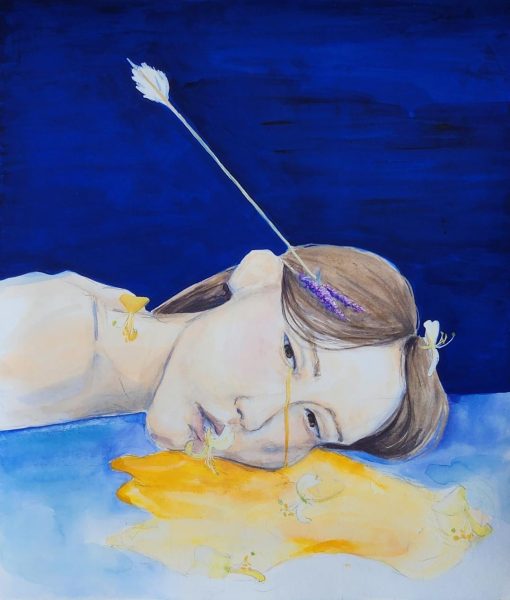101 Degree Football
Photo provided by: Chloe Hyde
Senior Cade Cecere take a drink of water after playing in the varsity football game. The Patriots won the game against Orange City University, 35-28
October 8, 2018
Football, inherently, is not an easy sport. Massive men are charging full speed at each other, with the sole intent of slamming each other down into the dirt. However, the labors of the sport go beyond simple body-to-body contact, especially in one of the hottest states in America.
The reality of how challenging these practices can be was brought into the spotlight this past summer, when a University of Maryland player, Jordan McNair, died due to a heat illness caused during practice. The news rocked the nation for months, making fans and players give the practices that they once took for granted a second look. The death of McNair was not the first heat-related football death, and it will likely not be the last.
“Prolonged sweating draws a lot of water from the bloodstream, further reducing its capacity to deliver nutrients, clear out wastes, lubricate joints and cool you later,” athletic training teacher Michael Holmes said. “You can easily sweat out one quart of water during an hour of heavy work in hot weather, three fourths of a quart in less strenuous work.”
When the football team practices right after school, the sun is at its peak. This worsens the players ability to stay cool, who not only wear pounds and pounds of padding, but also physically exert themselves to their limit.
“Heat is definitely a huge factor,” junior varsity junior football player Brandon Boyer said. “By the time we finish warming up, the entire team is sweating buckets. It’s also very common for players to have to stop practicing due to dehydration.”
The heat is not an issue exclusive to players. Coaches, despite environmental conditions, have to have their team ready for action when the Friday night lights turn on. They must keep a balance between working their players hard enough to play well, but not so hard that their athletes become dehydrated.
“It has its positive and negatives,” football coach David Delfiacco said. “The positive part is that we practice during the day when it’s hot and play games when it is not as hot so it helps us to be in better shape for game time. The negative would be that the heat in the body during practice causes the players to fatigue faster and lose focus.”
The McNair incident launched studies and searches to find how to prevent similar tragedies from happening again. An important step to eradicating heat deaths in football is recognizing the symptoms of heat illness. If the signs of heat illness are seen in a player early on, they can be better treated and healed quicker.
“Drinking small amounts frequently, such as six to eight ounces every 15 minutes, is more effective than large amounts less often,” Holmes said. “Most people do not feel thirsty until their fluid loss reaches two percent of body weight and is already affecting them. If your body continues to lose fluid, you are likely to experience increasingly severe symptoms of heat illness: general discomfort, loss of coordination and stamina, weakness, poor concentration, irritability, muscle pain and cramping, fatigue, blurry vision, headache, dizziness, nausea, confusion and unconsciousness.”
Despite the blistering conditions that they work in, the players find ways to make it through games and practices. They learn how to handle the heat through experience, and eventually grow accustomed to the environment.
“A smart player knows to rest whenever they can and to never over exert themselves during the heat,” Boyer said. “All while drinking plenty of water.”












